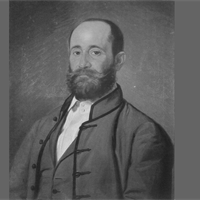Anne Frank | Origin of Street Names
- Nikola Igračev
- 3 min
- 12 June 2020.
- Entertainment
Anne Marie Frank (1929 - 1945) was just one of over six million tragic victims of the Holocaust during World War II, yet perhaps the most famous one due to the poignant diary she kept during years of hiding from the Nazis, which was discovered and published worldwide in millions of copies after the war.
A girl of Jewish descent, she was born in Frankfurt, Germany, a few years before the fascists seized power in the country. The openly anti-Semitic policies of the National Socialist Party forced the Frank family to leave their homeland and relocate to Amsterdam in 1933.
With the German occupation of the Netherlands in 1940, a blatant pogrom against Jews began, and Anne and her family were forced into hiding. She spent over two years in a so-called "secret annex," hidden rooms within the building where her father's company was located. With the help of a few individuals who provided them with food and basic necessities, the family silently endured, hoping to avoid the worst.
However, to this day, it is unknown who and why in the summer of 1944 revealed the Frank family's hiding place to the Nazis, after which they were all sent to concentration camps, where Anne, her sister Margot, and their mother Edith, weak and emaciated, lost their lives, one after another, within a few months.
By a twist of fate, Anne's father, who was separated from the family immediately after their arrest and whom the girls believed was no longer alive, survived. After the war and upon his return to Amsterdam in 1945, he received the manuscript of Anne's diary, which the girl secretly kept during her two-year confinement in the hidden room. Reading it and for the first time getting to know the inner and lesser-known side of his child, who was no longer among the living, Otto Frank relived the tragic years with great sorrow.
Finally, in 1947, he decided to publish the manuscript so that the whole world could gain insight into the authentic testimony of the most tragic era in European history, from the perspective of a 15-year-old girl.
Despite being long disputed by those who wanted to conceal the horrors of the Holocaust, "The Diary of Anne Frank" has been one of the most widely read books worldwide for decades, translated into over 40 languages. It is an integral part of school curricula in most European countries, including Serbia.
The thoughts and feelings of a girl whose childhood was abruptly and cruelly interrupted, the anxieties and fears of a teenager who directly witnesses the horrors of the Nazi regime but still maintains her childlike hope for a better life, have become a symbol of the suffering of hundreds of thousands of her peers throughout Europe and the world, who faced the same fate during World War II.
Anne Frank's exact date of death is still unknown, and her remains rest in a mass grave with hundreds of her fellow prisoners in the area of the former Bergen-Belsen concentration camp. The house in which the Frank family hid in Amsterdam for years is now converted into the Anne Frank House Museum.
In memory of one of the most famous victims of the Holocaust, streets in Belgrade, Kragujevac, Subotica, and Bačka Topola bear the name of Anne Frank.


